Giant numbers
In this article I want to share with you some impressive facts from the world around us. We will consider truly large and even gigantic numbers that we may encounter either in reality (sometimes not noticing it ourselves), or in calculations that say something important about our universe. Some numbers are so amazing that even just to present them, it is already necessary to make a lot of mental effort. The article will be constructed as follows. We will move along the path of increasing dozens of degrees, starting from a million and further, as far as we have enough knowledge, patience and strength. Let's hit the road.
Our first stop is the "million" or 10th to the 6th degree. This is a large number, but nevertheless it does not strike the imagination as much as those numbers do, which we will get to soon. We come across millions of things quite often. You can even count up to a million, and one very unusual person named Jeremy Harper did this by broadcasting his three-month counting marathonin Internet. By the way, a million seconds is only 11.5 days. A million rubles may not be enough to buy a good car or a modest apartment in St. Petersburg. A stack of a million books placed on top of each other will not even go beyond the Earth’s atmosphere. In turn, one million, large enough books can be made up of a million letters (for example, a complete Bible consists of more than 2.5 million letters). A million peas will fit in a large bag, which, in principle, can even be lifted if you are not afraid to tear yourself. A million grains of sand can easily fit in a handful.
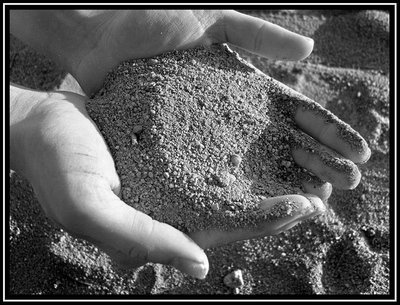
A million bacteria will be barely visible to the naked eye. A million times human hair will be about 100 meters in diameter. A building of a million floors (if it could be built) would rise to a height of 2.5 thousand kilometers - more than 4 times higher than the Hubble telescope and most artificial Earth satellites fly.
All this is quite curious, but not particularly impressive. However, we have just begun our journey. And our next number is “billion,” or 10 to the 9th power. With billions we meet much less often. If we want to see a billion of things and not be crushed, we will have to take something very, very small. For example, molecules. Of course, one molecule is not visible to the naked eye (and it can not be seen in any microscope). But the billion molecules put “shoulder to shoulder” will take about 30 centimeters (in general, the molecules vary greatly in size and for example we took a water molecule, which, as you know, consists of two hydrogen atoms and one oxygen atom). The sum of a billion dollars can still be somehow imagined. This is the price of some ultra-modern combat aircraft or military aircraft carrier (yes, war is a very expensive undertaking). The cost of the Large Hadron Collider is about 10 billion dollars. The human brain is made up of 100 billion neurons.
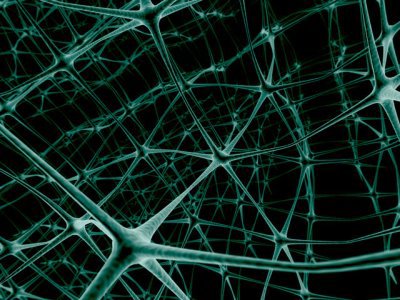
And as many, but only people, lived on our planet in its entire history. Now let's look up. If you divide the distance from the Earth to the Moon by a billion, you get about 40 centimeters. And if you divide the distance from the Earth to the Sun by the same billion, then you get already 150 meters, and this is a large skyscraper almost half the height of the Eiffel Tower. The Earth itself, reduced by a billion times, will become the size of a grape - and, by the way, then it will turn into a black hole. The Voyager spacecraft, launched in 1977, flew almost 20 billion kilometers each. The space is really huge, and we will still feel it fully when we get to the numbers much larger. What about time? A billion seconds is 31.7 years, a whole generation. If you increase the hydrogen atom by a billion times, then its diameter will be as much as 10 centimeters, although its core, even with such an increase, you still can’t see. On this scale, the smallest viruses will be giants the size of several tens, or even hundreds of meters. And even a DNA molecule will be as wide as 3 meters.
Our third guest is “trillion” or 10 in the 12th degree. And to present it visually, you already have to work hard. For example, what could cost a trillion dollars? According to some estimates, this is the price of an expedition to Mars. And how much do you think is the total cash on planet Earth? About 4 trillion dollars. It's funny that the US government debt is almost 5 times more. And if you add up everything that you can buy today for money, then it will cost almost $ 100 trillion.
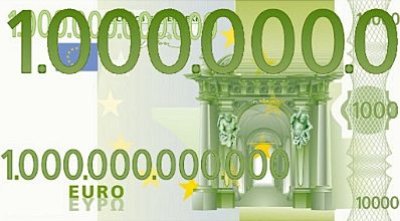
The total mass of air that is inhaled by all people on our planet for 1 year is about 6 trillion kilograms. About one trillion fish inhabit the oceans of our planet. A trillion seconds, as you probably already guessed, is a thousand times longer than a billion - that is, more than 31 thousand years. About so much time ago, Neanderthals became extinct. But these are seconds. But after a trillion years, something much more interesting will happen - in the galaxies, new stars will cease to form. A trillion kilometers - such a distance light travels in a vacuum in a little more than a month. And 42 trillion kilometers is the distance to the nearest star to us (Proxima Centauri). If we take a trillion bacteria (suppose we somehow manage to collect them all together), then they will occupy the volume of one cube of sugar. About as many bacteria are found on the human body. And the number of cells in it is several tens of trillions. In all ever-printed books in the history of typography, about 100 trillion letters. In general, it seems that a trillion is a lot. But try to take something really small, like an atom. A handful of a trillion atoms can not even be seen with the naked eye, that's how small they are. Let's get something a trillion times better. For example, an electron. It will be the size of a pea. But the quarks, enlarged a trillion times, will still not be visible. By the way, you understand that taking a trillion pieces of something is not at all the same as increasing this something a trillion times? But try to take something really small, like an atom. A handful of a trillion atoms can not even be seen with the naked eye, that's how small they are. Let's get something a trillion times better. For example, an electron. It will be the size of a pea. But the quarks, enlarged a trillion times, will still not be visible. By the way, you understand that taking a trillion pieces of something is not at all the same as increasing this something a trillion times? But try to take something really small, like an atom. A handful of a trillion atoms can not even be seen with the naked eye, that's how small they are. Let's get something a trillion times better. For example, an electron. It will be the size of a pea. But the quarks, enlarged a trillion times, will still not be visible. By the way, you understand that taking a trillion pieces of something is not at all the same as increasing this something a trillion times?
The fourth number is “quadrillion” or 10 to the 15th degree. This name is no longer heard, and rarely does anyone use it in everyday life. For example, a quadrillion dollars is an unused amount in a practical sense. It’s not even clear what can cost so much. Unless a small mountain 200 meters high, consisting of a single piece of platinum (if it existed and if we managed to sell it on the market at the current rate). In the human body (not only on the skin, as in the previous paragraph), up to 1 quadrillion bacteria live, and their total weight is about 2 kilograms. And about a quadrillion ants live on our planet (yes, they are much more than people - about 100 thousand times).

If you fly a quadrillion kilometers (and this is about 100 light years), then you can visit several of the stars closest to Earth and return. After 200 quadrillion seconds, the Sun will enter the stage of the red giant. Remember the quarks from our previous paragraph? Let's increase them by a quadrillion times. The size of the largest of them will be approximately 1 millimeter, and the smallest (the so-called “true” quarks) will still not be visible. And neutrinos, by the way, will also not be visible, although we can only judge about their size very roughly. And the most powerful modern computers give out several tens of quadrillion operations per second (petaflops).
Our fifth guest is “quintillion” or 10 to the 18th degree. It is a thousand times larger than a quadrillion. A quintillion kilometers is the approximate diameter of our galaxy called the Milky Way. To our neighbor, the Andromeda galaxy, 25 quintillion (and, by the way, this distance is reduced by 300 kilometers every second, because we are approaching at such a speed). Quintillion seconds - this time is 2 times longer than that which has passed from the Big Bang to the present moment. In order to scoop out all the world's oceans, 5-6 quintillion glasses are enough. And if we take a quintillion molecules of ink, we can write with them one single, not very large, word. 25-30 quintillion molecules are contained in 1 cc of air at normal temperature and pressure (basically, these are nitrogen molecules - 78% and oxygen - 21%). The mass of the entire atmosphere of the Earth is about 5 quintillion kilograms. The number of possible combinations of the Rubik's Cube is 43 quintillion or more. To place a quintillion bacteria, we need a fairly large barrel, but only one. A computer with a capacity of quintillion operations per second should appear in a couple of years. And finally, if we want to throw a coin in such a way that it falls on the edge 5 times in a row, then on average we will have to make about 8 quintillion attempts for this (although, of course, it depends a lot on what the coin is and how exactly we throw it). A computer with a capacity of quintillion operations per second should appear in a couple of years. And finally, if we want to throw a coin in such a way that it falls on the edge 5 times in a row, then on average we will have to make about 8 quintillion attempts for this (although, of course, it depends a lot on what the coin is and how exactly we throw it). A computer with a capacity of quintillion operations per second should appear in a couple of years. And finally, if we want to throw a coin in such a way that it falls on the edge 5 times in a row, then on average we will have to make about 8 quintillion attempts for this (although, of course, it depends a lot on what the coin is and how exactly we throw it).
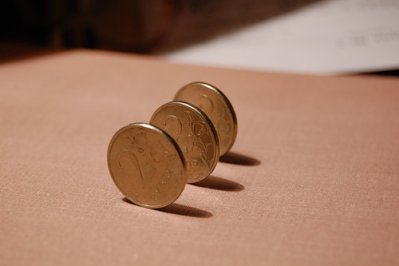
We move on. Sextillion or 10 to the 21st degree. So many atoms are contained in a small ball of aluminum with a diameter of a couple of millimeters.
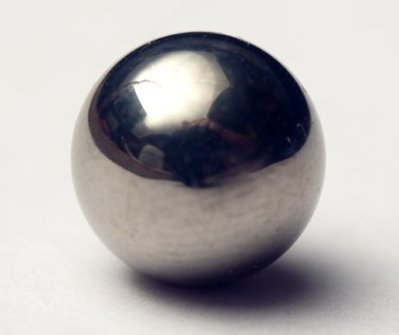
In one breath, we capture about 10 sextillion molecules of air (and among them there will almost certainly be several molecules that were exhaled by some prominent historical figure, such as Elvis Presley). The earth’s hydrosphere weighs one and a half sextillion kilograms, and the moon about 70 sextillion. Having increased the neutrino by a sextillion times, we can finally see it, although it will be very tiny even with such a fantastic approximation. The number of grains of sand on all the beaches of the Earth is several sextillion, although this depends heavily on how and what we think. At the same time, there are even more stars in the Universe (more on this below). And the size of its visible part is about 130 sextillion kilometers. Of course, no one measures such distances in kilometers, but uses much more suitable light years and parsecs for this.
Our next giant in line is the "septillion" or 10 in the 24th degree. Finding life examples is becoming increasingly difficult. 6 septillion kilograms weighs our Earth. The number of stars in the observable Universe is a septillion or quite a bit less.

The famous Avogadro number, representing the number of molecules in one mole of a substance, is almost a septillion (more accurate value: 6 per 10²³ degree). 10 septillion water molecules will fit in one glass. And if you put 50 septillion poppy seeds in a row, then such a chain will stretch to the Andromeda Nebula.
10 to the 27th degree is "octillion." Octillion peas will occupy the same volume as planet Earth. This number is also interesting in that if you take 5-10 octillion atoms, then you can make a human body out of them.
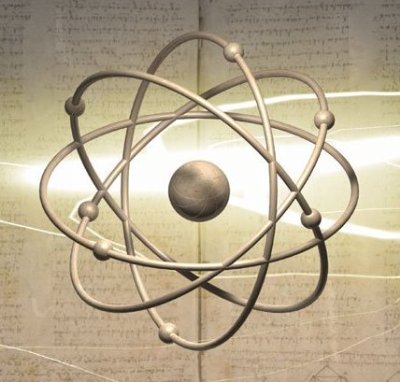
And finally, 10 to the 30th degree is “nonillion”. I have to turn to examples from pure fiction. Nonillion dollars would be worth 5 planets the size of the Earth, if they consisted of pure platinum. In order to make out with the naked eye the basic components of matter (it is assumed that these are one-dimensional quantum strings), they will have to be increased by 100 nonillion times. Suffice it to say that the thickness of a human hair with such an increase will exceed the size of the observable Universe. The mass of the sun is 2 nonillion kilograms, and the entire solar system is only slightly more.
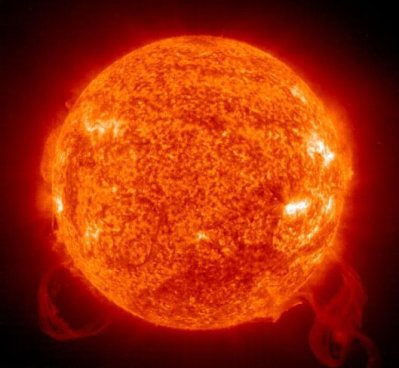
The proton lifetime is at least nonillion years (and most likely, much longer). In 1 kilogram of substance, about 1 nonillion electrons. And from a nonillion molecules you can make a whole elephant.
10 to the 33rd degree is called decillion, but further we will get by without notation. The mass of the Galaxy is 2 per 10⁴¹ kilograms. The number of possible combinations in a deck of 36 cards is 3.72 per 10⁴¹, and the positions in chess are 4.6 per 10⁴². The energy of a supernova explosion is 10⁴² joules. The number of air molecules on Earth is 10⁴⁴, and the number of atoms that make up our entire planet is 10⁵⁰. The mass of the entire Universe is 1.7 per 10⁵³ kilogram. A typical white dwarf consists of 10⁵⁷ particles. If we divide the largest of the actually existing distances (the radius of the Universe) by the smallest (Planck length), we get 4.6 by 10⁶¹. 10⁶⁶ years is the time of evaporation of a black hole with the mass of the Sun. The number of atoms in the Galaxy is 10⁶⁷, and in the entire Universe - 10⁷⁷. At the same time, elementary particles in the Universe - 10⁸⁰, and the number of photons even more - 10⁹⁰. The number 10¹⁰⁰ has the beautiful name "Googol". Through Googol years the last black holes will evaporate and our Universe will plunge into darkness (probably). The number of non-repeating chess games (the so-called Shannon Number) is at least 10¹¹⁸.
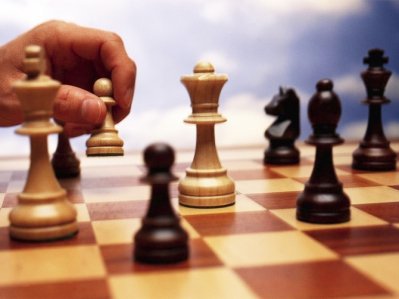
If you fill the entire visible Universe “to the eyeballs” with protons, then they will fit about 10 их²² into it. And if we take for the same purpose the smallest of the volumes known to science (Planck volume), then we get 10¹⁸⁵. Truly stunning. Probably, theoretical physics ends here and pure mathematics begins - the queen of all sciences.
Yes, there are numbers and much larger ones, but they no longer have application in the real world. One of the largest numbers (and until recently, the largest) of those used in the proofs of theorems is the Graham number, introduced by mathematician Ronald Graham. It is so great that to designate it we had to use a completely new notation, that is, a number notation system. The only thing that can be said about Graham’s number is that no matter how you imagine it, it’s actually much, much bigger. It ends at 387, but no one knows what number it starts from, and, apparently, it never will.
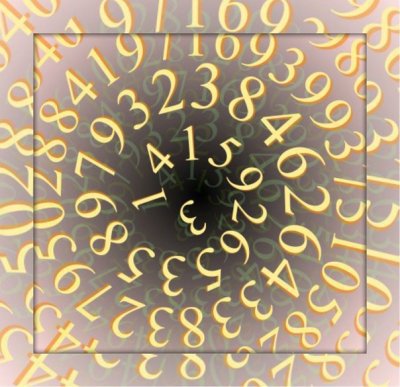
Since in this text I turned to very large numbers, I probably made inaccuracies, although I tried to avoid them if possible, checking what I write in credible sources. Of course, if we are talking, for example, about a quintillion particles, then an error of 10 times will be almost imperceptible (10¹⁸ and 10¹⁹ do not differ too much by eye). If you think that somewhere I made a grosser mistake, please write about it.
Million = 1,000,000 = 10⁶
Our first stop is the "million" or 10th to the 6th degree. This is a large number, but nevertheless it does not strike the imagination as much as those numbers do, which we will get to soon. We come across millions of things quite often. You can even count up to a million, and one very unusual person named Jeremy Harper did this by broadcasting his three-month counting marathonin Internet. By the way, a million seconds is only 11.5 days. A million rubles may not be enough to buy a good car or a modest apartment in St. Petersburg. A stack of a million books placed on top of each other will not even go beyond the Earth’s atmosphere. In turn, one million, large enough books can be made up of a million letters (for example, a complete Bible consists of more than 2.5 million letters). A million peas will fit in a large bag, which, in principle, can even be lifted if you are not afraid to tear yourself. A million grains of sand can easily fit in a handful.

A million bacteria will be barely visible to the naked eye. A million times human hair will be about 100 meters in diameter. A building of a million floors (if it could be built) would rise to a height of 2.5 thousand kilometers - more than 4 times higher than the Hubble telescope and most artificial Earth satellites fly.
Billion = 1,000,000,000 = 10⁹
All this is quite curious, but not particularly impressive. However, we have just begun our journey. And our next number is “billion,” or 10 to the 9th power. With billions we meet much less often. If we want to see a billion of things and not be crushed, we will have to take something very, very small. For example, molecules. Of course, one molecule is not visible to the naked eye (and it can not be seen in any microscope). But the billion molecules put “shoulder to shoulder” will take about 30 centimeters (in general, the molecules vary greatly in size and for example we took a water molecule, which, as you know, consists of two hydrogen atoms and one oxygen atom). The sum of a billion dollars can still be somehow imagined. This is the price of some ultra-modern combat aircraft or military aircraft carrier (yes, war is a very expensive undertaking). The cost of the Large Hadron Collider is about 10 billion dollars. The human brain is made up of 100 billion neurons.

And as many, but only people, lived on our planet in its entire history. Now let's look up. If you divide the distance from the Earth to the Moon by a billion, you get about 40 centimeters. And if you divide the distance from the Earth to the Sun by the same billion, then you get already 150 meters, and this is a large skyscraper almost half the height of the Eiffel Tower. The Earth itself, reduced by a billion times, will become the size of a grape - and, by the way, then it will turn into a black hole. The Voyager spacecraft, launched in 1977, flew almost 20 billion kilometers each. The space is really huge, and we will still feel it fully when we get to the numbers much larger. What about time? A billion seconds is 31.7 years, a whole generation. If you increase the hydrogen atom by a billion times, then its diameter will be as much as 10 centimeters, although its core, even with such an increase, you still can’t see. On this scale, the smallest viruses will be giants the size of several tens, or even hundreds of meters. And even a DNA molecule will be as wide as 3 meters.
Trillion = 1,000,000,000,000 = 10¹²
Our third guest is “trillion” or 10 in the 12th degree. And to present it visually, you already have to work hard. For example, what could cost a trillion dollars? According to some estimates, this is the price of an expedition to Mars. And how much do you think is the total cash on planet Earth? About 4 trillion dollars. It's funny that the US government debt is almost 5 times more. And if you add up everything that you can buy today for money, then it will cost almost $ 100 trillion.

The total mass of air that is inhaled by all people on our planet for 1 year is about 6 trillion kilograms. About one trillion fish inhabit the oceans of our planet. A trillion seconds, as you probably already guessed, is a thousand times longer than a billion - that is, more than 31 thousand years. About so much time ago, Neanderthals became extinct. But these are seconds. But after a trillion years, something much more interesting will happen - in the galaxies, new stars will cease to form. A trillion kilometers - such a distance light travels in a vacuum in a little more than a month. And 42 trillion kilometers is the distance to the nearest star to us (Proxima Centauri). If we take a trillion bacteria (suppose we somehow manage to collect them all together), then they will occupy the volume of one cube of sugar. About as many bacteria are found on the human body. And the number of cells in it is several tens of trillions. In all ever-printed books in the history of typography, about 100 trillion letters. In general, it seems that a trillion is a lot. But try to take something really small, like an atom. A handful of a trillion atoms can not even be seen with the naked eye, that's how small they are. Let's get something a trillion times better. For example, an electron. It will be the size of a pea. But the quarks, enlarged a trillion times, will still not be visible. By the way, you understand that taking a trillion pieces of something is not at all the same as increasing this something a trillion times? But try to take something really small, like an atom. A handful of a trillion atoms can not even be seen with the naked eye, that's how small they are. Let's get something a trillion times better. For example, an electron. It will be the size of a pea. But the quarks, enlarged a trillion times, will still not be visible. By the way, you understand that taking a trillion pieces of something is not at all the same as increasing this something a trillion times? But try to take something really small, like an atom. A handful of a trillion atoms can not even be seen with the naked eye, that's how small they are. Let's get something a trillion times better. For example, an electron. It will be the size of a pea. But the quarks, enlarged a trillion times, will still not be visible. By the way, you understand that taking a trillion pieces of something is not at all the same as increasing this something a trillion times?
Quadrillion = 1,000,000,000,000,000 = 10¹⁵
The fourth number is “quadrillion” or 10 to the 15th degree. This name is no longer heard, and rarely does anyone use it in everyday life. For example, a quadrillion dollars is an unused amount in a practical sense. It’s not even clear what can cost so much. Unless a small mountain 200 meters high, consisting of a single piece of platinum (if it existed and if we managed to sell it on the market at the current rate). In the human body (not only on the skin, as in the previous paragraph), up to 1 quadrillion bacteria live, and their total weight is about 2 kilograms. And about a quadrillion ants live on our planet (yes, they are much more than people - about 100 thousand times).

If you fly a quadrillion kilometers (and this is about 100 light years), then you can visit several of the stars closest to Earth and return. After 200 quadrillion seconds, the Sun will enter the stage of the red giant. Remember the quarks from our previous paragraph? Let's increase them by a quadrillion times. The size of the largest of them will be approximately 1 millimeter, and the smallest (the so-called “true” quarks) will still not be visible. And neutrinos, by the way, will also not be visible, although we can only judge about their size very roughly. And the most powerful modern computers give out several tens of quadrillion operations per second (petaflops).
Quintillion = 1,000,000,000,000,000,000 = 10¹⁸
Our fifth guest is “quintillion” or 10 to the 18th degree. It is a thousand times larger than a quadrillion. A quintillion kilometers is the approximate diameter of our galaxy called the Milky Way. To our neighbor, the Andromeda galaxy, 25 quintillion (and, by the way, this distance is reduced by 300 kilometers every second, because we are approaching at such a speed). Quintillion seconds - this time is 2 times longer than that which has passed from the Big Bang to the present moment. In order to scoop out all the world's oceans, 5-6 quintillion glasses are enough. And if we take a quintillion molecules of ink, we can write with them one single, not very large, word. 25-30 quintillion molecules are contained in 1 cc of air at normal temperature and pressure (basically, these are nitrogen molecules - 78% and oxygen - 21%). The mass of the entire atmosphere of the Earth is about 5 quintillion kilograms. The number of possible combinations of the Rubik's Cube is 43 quintillion or more. To place a quintillion bacteria, we need a fairly large barrel, but only one. A computer with a capacity of quintillion operations per second should appear in a couple of years. And finally, if we want to throw a coin in such a way that it falls on the edge 5 times in a row, then on average we will have to make about 8 quintillion attempts for this (although, of course, it depends a lot on what the coin is and how exactly we throw it). A computer with a capacity of quintillion operations per second should appear in a couple of years. And finally, if we want to throw a coin in such a way that it falls on the edge 5 times in a row, then on average we will have to make about 8 quintillion attempts for this (although, of course, it depends a lot on what the coin is and how exactly we throw it). A computer with a capacity of quintillion operations per second should appear in a couple of years. And finally, if we want to throw a coin in such a way that it falls on the edge 5 times in a row, then on average we will have to make about 8 quintillion attempts for this (although, of course, it depends a lot on what the coin is and how exactly we throw it).

Sextillion = 1,000,000,000,000,000,000,000 = 10²¹
We move on. Sextillion or 10 to the 21st degree. So many atoms are contained in a small ball of aluminum with a diameter of a couple of millimeters.

In one breath, we capture about 10 sextillion molecules of air (and among them there will almost certainly be several molecules that were exhaled by some prominent historical figure, such as Elvis Presley). The earth’s hydrosphere weighs one and a half sextillion kilograms, and the moon about 70 sextillion. Having increased the neutrino by a sextillion times, we can finally see it, although it will be very tiny even with such a fantastic approximation. The number of grains of sand on all the beaches of the Earth is several sextillion, although this depends heavily on how and what we think. At the same time, there are even more stars in the Universe (more on this below). And the size of its visible part is about 130 sextillion kilometers. Of course, no one measures such distances in kilometers, but uses much more suitable light years and parsecs for this.
Septillion = 1,000,000,000,000,000,000,000,000 = 10²⁴
Our next giant in line is the "septillion" or 10 in the 24th degree. Finding life examples is becoming increasingly difficult. 6 septillion kilograms weighs our Earth. The number of stars in the observable Universe is a septillion or quite a bit less.

The famous Avogadro number, representing the number of molecules in one mole of a substance, is almost a septillion (more accurate value: 6 per 10²³ degree). 10 septillion water molecules will fit in one glass. And if you put 50 septillion poppy seeds in a row, then such a chain will stretch to the Andromeda Nebula.
Octillion = 1,000,000,000,000,000,000,000,000,000 = 10²⁷
10 to the 27th degree is "octillion." Octillion peas will occupy the same volume as planet Earth. This number is also interesting in that if you take 5-10 octillion atoms, then you can make a human body out of them.

Nonillion = 1,000,000,000,000,000,000,000,000,000,000 = 10³⁰
And finally, 10 to the 30th degree is “nonillion”. I have to turn to examples from pure fiction. Nonillion dollars would be worth 5 planets the size of the Earth, if they consisted of pure platinum. In order to make out with the naked eye the basic components of matter (it is assumed that these are one-dimensional quantum strings), they will have to be increased by 100 nonillion times. Suffice it to say that the thickness of a human hair with such an increase will exceed the size of the observable Universe. The mass of the sun is 2 nonillion kilograms, and the entire solar system is only slightly more.

The proton lifetime is at least nonillion years (and most likely, much longer). In 1 kilogram of substance, about 1 nonillion electrons. And from a nonillion molecules you can make a whole elephant.
10 to the 33rd degree is called decillion, but further we will get by without notation. The mass of the Galaxy is 2 per 10⁴¹ kilograms. The number of possible combinations in a deck of 36 cards is 3.72 per 10⁴¹, and the positions in chess are 4.6 per 10⁴². The energy of a supernova explosion is 10⁴² joules. The number of air molecules on Earth is 10⁴⁴, and the number of atoms that make up our entire planet is 10⁵⁰. The mass of the entire Universe is 1.7 per 10⁵³ kilogram. A typical white dwarf consists of 10⁵⁷ particles. If we divide the largest of the actually existing distances (the radius of the Universe) by the smallest (Planck length), we get 4.6 by 10⁶¹. 10⁶⁶ years is the time of evaporation of a black hole with the mass of the Sun. The number of atoms in the Galaxy is 10⁶⁷, and in the entire Universe - 10⁷⁷. At the same time, elementary particles in the Universe - 10⁸⁰, and the number of photons even more - 10⁹⁰. The number 10¹⁰⁰ has the beautiful name "Googol". Through Googol years the last black holes will evaporate and our Universe will plunge into darkness (probably). The number of non-repeating chess games (the so-called Shannon Number) is at least 10¹¹⁸.

If you fill the entire visible Universe “to the eyeballs” with protons, then they will fit about 10 их²² into it. And if we take for the same purpose the smallest of the volumes known to science (Planck volume), then we get 10¹⁸⁵. Truly stunning. Probably, theoretical physics ends here and pure mathematics begins - the queen of all sciences.
Yes, there are numbers and much larger ones, but they no longer have application in the real world. One of the largest numbers (and until recently, the largest) of those used in the proofs of theorems is the Graham number, introduced by mathematician Ronald Graham. It is so great that to designate it we had to use a completely new notation, that is, a number notation system. The only thing that can be said about Graham’s number is that no matter how you imagine it, it’s actually much, much bigger. It ends at 387, but no one knows what number it starts from, and, apparently, it never will.

Since in this text I turned to very large numbers, I probably made inaccuracies, although I tried to avoid them if possible, checking what I write in credible sources. Of course, if we are talking, for example, about a quintillion particles, then an error of 10 times will be almost imperceptible (10¹⁸ and 10¹⁹ do not differ too much by eye). If you think that somewhere I made a grosser mistake, please write about it.
